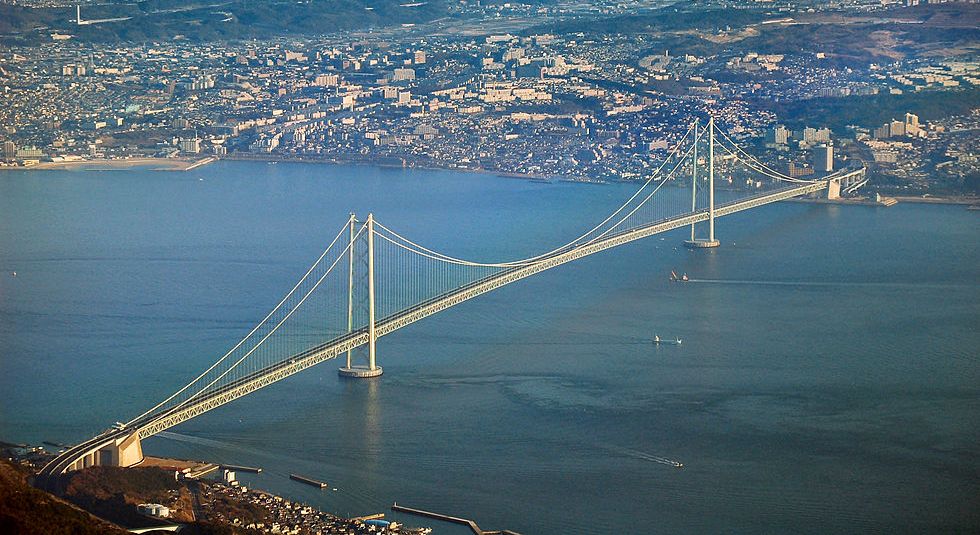The Akashi Kaikyō Bridge
 The Akashi Kaikyō Bridge (明石海峡大橋 Akashi Kaikyō Ō-hashi)[1], also known as the Pearl Bridge, links the city of Kobe on the mainland of Honshu to Iwaya on Awaji Island, in Japan. It crosses the busy Akashi Strait (Akashi Kaikyō in Japanese) and carries part of the Honshu-Shikoku Highway.
The Akashi Kaikyō Bridge (明石海峡大橋 Akashi Kaikyō Ō-hashi)[1], also known as the Pearl Bridge, links the city of Kobe on the mainland of Honshu to Iwaya on Awaji Island, in Japan. It crosses the busy Akashi Strait (Akashi Kaikyō in Japanese) and carries part of the Honshu-Shikoku Highway.
Since its completion, in 1998, the bridge had the longest central span of any suspension bridge in the world, at 1,991 metres until the onening of the Çanakkale Bridge in Turkey, which has a central span 32 metres longer. The bridge has three spans. The central span is 1,991 m and the two other sections are each 960 m. The bridge is 3,911 m long overall.
The two towers were originally 1,990 m apart, but the Great Hanshin earthquake on January 17, 1995, moved the towers so much (only the towers had been erected at the time) that the span had to be increased by 1 m. The bridge was designed with a two hinged stiffening girder system, allowing the structure to withstand winds of 286 kilometres per hour, earthquakes measuring up to magnitude 8.5, and harsh sea currents. The bridge also contains pendulums that are designed to operate at the resonance frequency of the bridge to dampen forces. The two main supporting towers rise 282.8 m above sea level, and the bridge can expand because of heat by up to 2 m over the course of a day. Each anchorage required 350,000 tonnes of concrete. The steel cables have 300,000 kilometres of wire: each cable is 112 centimetres in diameter and contains 36,830 strands of wire.
The Akashi-Kaikyo bridge has a total of 1,737 illumination lights: 1,084 for the main cables, 116 for the main towers, 405 for the girders and 132 for the anchorages.
1. The above information was edited from the Wikipedia article URL: https://en.wikipedia.org/wiki/Akashi_Kaiky%C5%8D_Bridge
